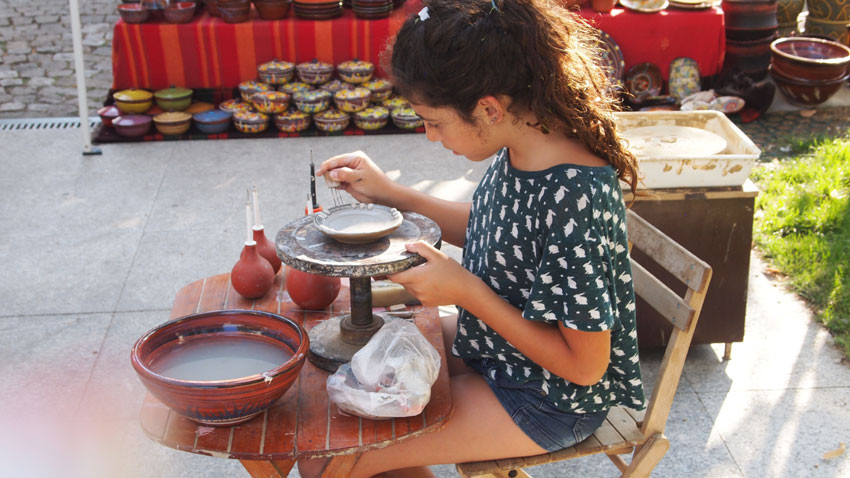Tsarevo, a small town in the southern portion of Bulgaria’s Black Sea coastline, is hosting an Arts and Crafts Festival for the 4th time.
Pavilions in the town’s centre house workshops and display works of art. Tourists are able to give free rein to their creative streak and join various creative activities, like pottery, wool felting, woodcarving, glass staining.

Besides the handicrafts of Bulgaria, other crafts coming from different cultures, have been gaining popularity with the combination of different traditions in a globalized world helping to preserve each one of them. That is why the festival in Tsarevo features a henna painting pavilion – an Indian tradition, adapted to Bulgaria, with the pictures in henna featuring Bulgarian embroidery and other traditional elements. Wholesome and delicious food, pleasant music, and lots of surprises – here is more about the festival from its organizer Luchezar Dimitrov:

“Handicrafts are a way of life. Once people develop an interest in a given handicraft, they live with their mentors, observing their way of life and the objects they craft every day – and learn how to live. So, besides “stealing the trade”, as we say, the apprentice “steals” the way of life as well.
The idea of the handicrafts festival is to bring people in contact with one another, to demonstrate how much work, how much inspiration goes into the making of the objects on show. They are the bond between the craftsmwen and the public. When there is an industry standing between the man in the street and the craftsman, this bond is severed, and the product loses its individuality. That is why at our festival we have workshops where anyone can come in contact and try their hand at different arts and crafts.”

 “I have been felting wool for five years, and I use ancient techniques – wet and dry felting,” says Margarita Cholakova, who is an animator by profession. “Wet felting is used mostly to make shawls, hats, clothes. Many colleagues, and not only in Bulgaria, make shoes. I use it as background for my paintings. Dry felting is another technique – the woolen yarns are woven into one another using a special notched needle. The difference is that wet felting is for bigger surfaces. Using a needle is much slower, there is always the risk of pricking your fingers, but in the end it turns out beautifully. I love to make toys out of felt.
“I have been felting wool for five years, and I use ancient techniques – wet and dry felting,” says Margarita Cholakova, who is an animator by profession. “Wet felting is used mostly to make shawls, hats, clothes. Many colleagues, and not only in Bulgaria, make shoes. I use it as background for my paintings. Dry felting is another technique – the woolen yarns are woven into one another using a special notched needle. The difference is that wet felting is for bigger surfaces. Using a needle is much slower, there is always the risk of pricking your fingers, but in the end it turns out beautifully. I love to make toys out of felt.

Wool has many different properties – it is antistatic, anti-allergic, moistureproof, proto-Bulgarians even made saddles out of it. It is a magnificent material.”
Photos: Ekaterina Ivanova
Minister of the Environment and Water Manol Genov has granted two centuries-old trees – each of which approximately 200 years old – protected status, the ministry has announced. One of them, a European white elm (Ulmus laevis), is 24 metres tall..
Everyone knows that as soon as temperatures start going down it is pickle-making season. Making preserves at home is a time-honoured and widespread tradition in this country, and, in this season, practically every family in Bulgaria sets about making..
Under the motto "Responsibility, Unity and Security" on November 5 and 6, 2025, a German-Bulgarian seminar for journalists and public figures was held in the Hyatt Regency Sofia Hotel. The organizers were the European Academy in..
Italy investigates claims of hunting of people in Sarajevo in the 1990s The prosecutor's office in Milan has..
Albania and Bulgaria have joined forces in the name of one more child being born. In the late afternoon of November 7, the first-ever free reproductive..
The diplomas from the 11th master class in radio journalism of the Bulgarian National Radio – BNR Academy were awarded at a solemn ceremony on November..

+359 2 9336 661
